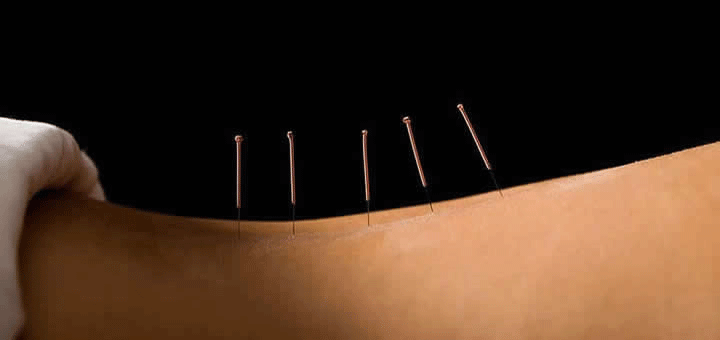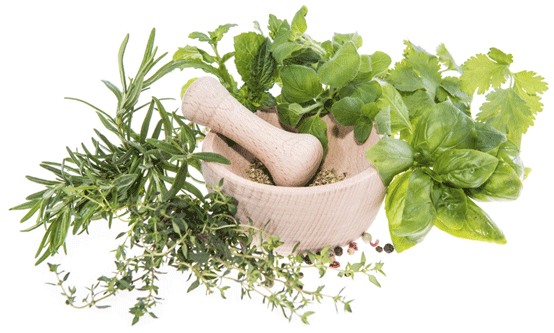Physiotherapy
Physiotherapy is a healthcare profession focused on helping individuals restore and maintain physical function and mobility, alleviate pain, and improve their overall quality of life. Physiotherapists use a combination of manual techniques, exercise, education, and other interventions to address a wide range of musculoskeletal, neurological, cardiopulmonary, and other health conditions.
Key aspects of physiotherapy include:
- Assessment and Diagnosis:Physiotherapists assess a patient's physical condition, including their range of motion, strength, flexibility, posture, and any pain or discomfort. This assessment helps them diagnose the underlying issues causing the patient's problems.
- Treatment Planning:Based on the assessment, physiotherapists develop personalized treatment plans tailored to each patient's unique needs and goals. These plans may include specific exercises, manual therapy techniques, modalities such as heat or cold therapy, and education about the condition and self-management.
- Rehabilitation:Physiotherapists work with patients to rehabilitate and restore physical function after injuries, surgeries, or medical conditions. This may involve regaining strength, improving balance, and relearning movement patterns.
- Pain Management:Physiotherapy can be effective in managing and reducing pain, whether it's related to a chronic condition, an acute injury, or a surgical procedure.
- Sports Rehabilitation:Physiotherapists also play a crucial role in preventing injuries and promoting overall wellness. They educate patients about proper ergonomics, posture, and exercises to maintain or improve physical health.
- Prevention:Physiotherapists often work with athletes to help them recover from sports-related injuries, improve performance, and prevent future injuries.
- Neurological Rehabilitation:In cases of neurological conditions like stroke, Parkinson's disease, or spinal cord injuries, physiotherapy can assist in restoring mobility, balance, and functional independence.
Physiotherapy is a holistic approach to healthcare that focuses on enhancing an individual's physical well-being while considering their overall health and lifestyle. The ultimate goal of physiotherapy is to enable individuals to lead active, functional lives and achieve their maximum potential in terms of physical health and mobility.

Massage therapy
Massage Therapy can be described as methodical friction, stroking or kneading of the body with the hands to relieve stress, promote relaxation, improve circulation and stimulate muscle function. The practitioners of this healing art are Registered Massage Therapists (RMT's) who train for up to three years and must pass qualifying exams. A massage can be a great way to relax a stressed body. Injuries heal faster when massage is part of the treatment.
Our massage therapists work in consultation with referring practitioners to address the health needs of each individual. Massage therapists are professionally trained to assess and treat a wide range of conditions from sports and work-related injuries to stress, headaches and arthritis. Muscle imbalances associated with these conditions, whether due to postural stressors or overuse, can cause pain and stiffness.
Massage therapy treatments focus on restoring muscles to supple, healthy state allowing for improved mobility and better support for your spine and joints. A sense of renewed energy and relaxation is often felt in response to these treatments. Once treatment goals are met, a recommended schedule of massage therapy would be once a month to maintain the benefits achieved.
Couple Massage
King Square Physiotherapy offers Couple's Massage for any two people who desire to receive their massage at the same time in the same room. It is a great way to treat yourself and your loved one on any special day. The couples massage is also known as "side by side massage", or "massage for two".
A Couples Massage is for everybody, friends, mother and daughter, father and son, husband and wife, boyfriend and girlfriend or same sex couples. In a Couple's Massage each client can receive the massage they need.
What can be better than sharing some silent time with your partner, friends or family? A Couples Massage can be a gentle introduction to massage therapy for any person who has never had a massage before. Couples Massage will be your great experience!

Hot Stone Massage
What is the Hot Stone Massage?
Hot stone massage is a variation on classic massage therapy. Heated smooth, flat stones are placed on key points on the body. The massage therapist may also hold the stones and use them to massage certain areas of the body.
The hot stones are usually made of basalt, a type of rock that is rich in iron, so they retain heat. River rocks are normally used because they are smooth - they are smoothed over time by the river current.
The stones are immersed in water and heated in an electric heater until they are within a certain temperature range. The placement of the stones is usually at specific points on the back, in the palms of the hand, or between the toes but may vary depending on the client's condition.
The heat of the stones warm and relax the muscles, which allows the therapist to apply deeper pressure, if desired.
The warmth of the hot stones improves circulation and calms the nervous system.
Some massage therapists place stones on points that are thought to be energy centers of the body to rebalance the body and mind.
Benefits of Hot Stone Massage
A common question people have is whether to get hot stone massage vs Swedish massage or a regular massage. Some people find the warmth of the hot stones to be comforting and get this type of massage for relaxation.
Hot stone massage is suited to people who tend to feel chilly or who have cold feet. It's also suited for people who have muscle tension but prefer a lighter massage. The heat relaxes muscles, allowing the therapist to work the muscles without using deep pressure.
People also get hot stone massage for a variety of health conditions:
- Back pain and aches
- Poor circulation
- Arthritis
- Osteoarthritis
- Stress, anxiety and tension
- Insomnia
- Depression

Acupuncture
What is acupuncture?
Acupuncture is a component of the health care system of China. The general theory of acupuncture is based on the premise that there are patterns of energy flow (Qi) through the body that are essential for health. Disruptions of this flow are believed to be responsible for disease. Acupuncture may, it has been theorized, correct imbalances of flow at identifiable points close to the skin.
Acupuncture is a family of procedures involving stimulation of anatomical locations on or in the skin by a variety of techniques. There are a variety of approaches to diagnosis and treatment in Canada acupuncture that incorporate medical traditions from China, The most thoroughly studied mechanism of stimulation of acupuncture points employs penetration of the skin by thin, solid, metallic needles, which are manipulated manually or by electrical stimulation. Acupuncture can treat variety of identifiable pathophysiological (disease) conditions.
What problems are commonly treated with Acupuncture?
The most common ailments presented to an acupuncturist tend to be pain related conditions. For example; arthritis, back, neck, knee and shoulder pain, carpal tunnel syndrome and sciatica.
Traditional Chinese Medicine is a complete medical system that is capable of diagnosing and successfully treating a wide range of conditions including:
Eye, Ear, Nose, Throat Disorders
- Sinusitis
- Earache
- Nerve Deafness
- Tinnitus
- Dizziness
- Myopia
Circulatory Disorders
- High Blood Pressure
- Angina Pectoris
- Arteriosclerosis
- Anemia
Gastrointestinal Disorders
- Irritable Bowel Syndrome
- Spastic colon
- Colitis
- Constipation
- Abdominal Bloating
Gynecological / Genitourinary Disorders
- Premenstrual Syndrome (PMS)
- Irregular, Heavy or Painful Menstruation
- Endometriosis
- Menopause
- Chronic Bladder Infection
- Morning Sickness
- Impotence
- Infertility in Men and Women
- Sexual Dysfunction
Addiction
- Smoking Cessation
- Drugs
- Alcohol
Emotional and Psychological Disorders
- Anxiety
- Insomnia
- Depression
- Stress
Musculoskeletal and Neurological Disorders
- Arthritis
- Neuralgia
- Sciatica
- Pain
- Bursitis
- Tendonitis
- Palsy
- Neuralgia
- Migraines
- Stroke
- Palsy
- Spasms
- Shingles
Respiratory Disorders
- Asthma
- Emphysema
- Bronchitis
- Colds and Flus
Acupuncture Also Treats
- Chemotherapy/Radiation Side Effects
- Diabetes
- Weight Control

Chinese Medicine
Chinese herbal medicine has a long history of use, dating back millennia and it continues to be used in many countries today as the first and primary treatment of choice.
Herbal medicine traditionally involved the use of raw herbs boiled in water for a period of time, with the subsequent broth reduced to concentrate the active ingredients which was then consumed as a liquid tea. While raw herbs continue to be used in contemporary practice, a range of other options for taking herbal medicine are also available.

Cupping Therapy
Natures of Cupping Therapy
During cupping treatment, a flammable substance such as alcohol, herbs, or paper is placed in a cup and set on fire. As the fire goes out, the cup is placed upside down on the patient's skin.
As the air inside the cup cools, it creates a vacuum. This causes the skin to rise and redden as blood vessels expand. The cup is generally left in place for 10 to 15 minutes.
Cupping therapy supporters believe that cupping removes harmful substances and toxins from the body to promote healing.>
Benefits of Cupping Therapy
The British Cupping Society says cupping therapy can treat a variety of conditions. This has not been backed up by studies. But the organization says cupping therapy is used to treat:
- Blood disorders such as hemophilia.
- Rheumatic diseases such as arthritis and fibromyalgia.
- Fertility and gynecological disorders.
- Skin problems such as eczema and acne.
- High blood pressure (hypertension).
- Migraine.
- Anxiety and depression.
- Bronchial congestion caused by allergies and asthma.
- Varicose veins.
Supporters also believe that cupping therapy can reduce pain and inflammation throughout the body. And they say it can promote mental and physical relaxation and well-being, increasing local circulation as well.
Side Effects and Risk of Cupping Therapy
Cupping is considered to be relatively safe, especially when performed by trained health professionals. Potential side effects include:
- Mild discomfort
- Red marks/Bruises
- May have blisters.
Risk:
- Burns
- Skin infection
Cupping therapy should be avoided by the following groups:
- Pregnant or menstruating women.
- People with metastatic cancer (cancer that has spread from one part of the body to another).
- People with bone fractures or muscle spasms.
The organization also says cupping therapy should not be applied to sites on the body that have:
- A deep vein thrombosis
- An ulcer
- An artery
- A pulse that can be felt
According to the American Cancer Society, one problem associated with cupping therapy is that patients may skip conventional treatment: "Relying on this treatment alone and delaying or avoiding conventional medical care for cancer may have serious health consequences.
Like many alternative treatments, cupping therapy has not been extensively studied. Researchers say that most cupping therapy studies have been small and poorly designed. More studies are needed to prove or disprove claims of health benefits.

Reflexology
Reflexology is an alternative medicine involving application of pressure to the feet and hands with specific thumb, finger, and hand techniques without the use of oil or lotion. It is based on a system of zones and reflex areas that reflect an image of the body on the feet and hands, with the premise that such work affects a physical change to the body.
A 2009 systematic review of randomized controlled trials concludes: "The best evidence available to date does not demonstrate convincingly that reflexology is an effective treatment for any medical condition."
There is no consensus among reflexologists on how reflexology is supposed to work; a unifying theme is the idea that areas on the foot correspond to areas of the body, and that by manipulating these one can improve health through one's qi. Reflexologists divide the body into ten equal vertical zones, five on the right and five on the left. Concerns have been raised by medical professionals that treating potentially serious illnesses with reflexology, which has no proven efficacy, could delay the seeking of appropriate medical treatment.
